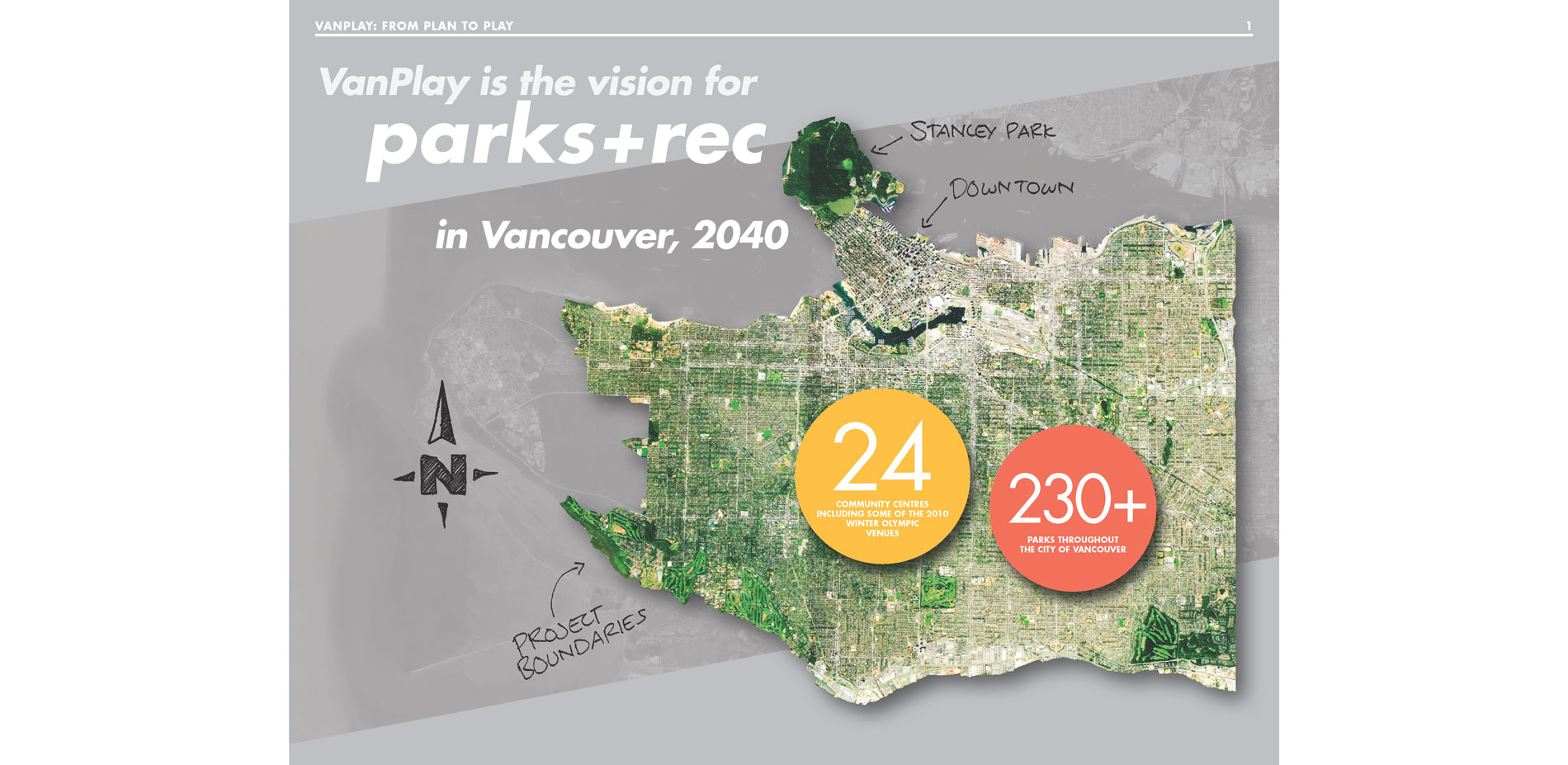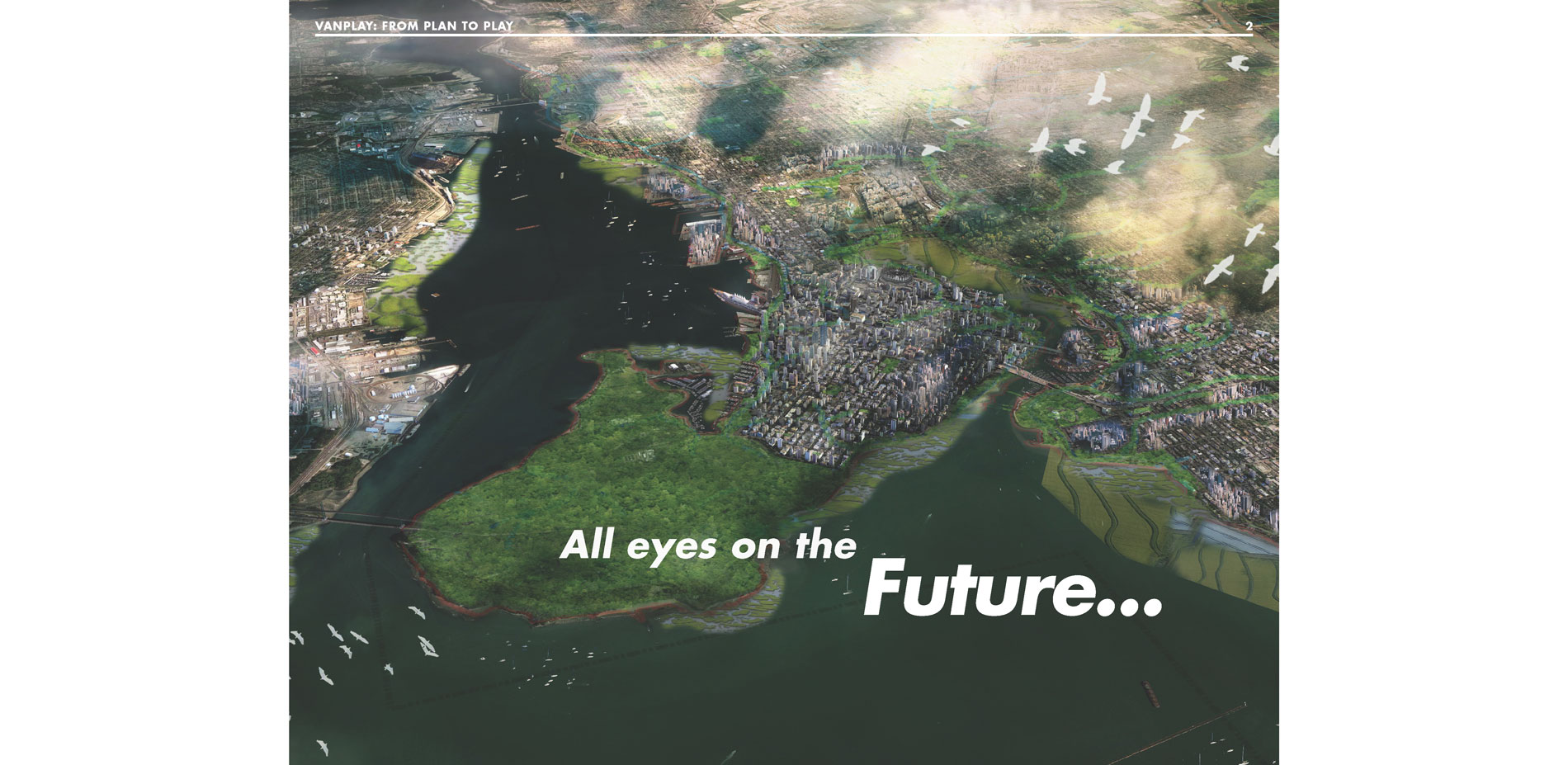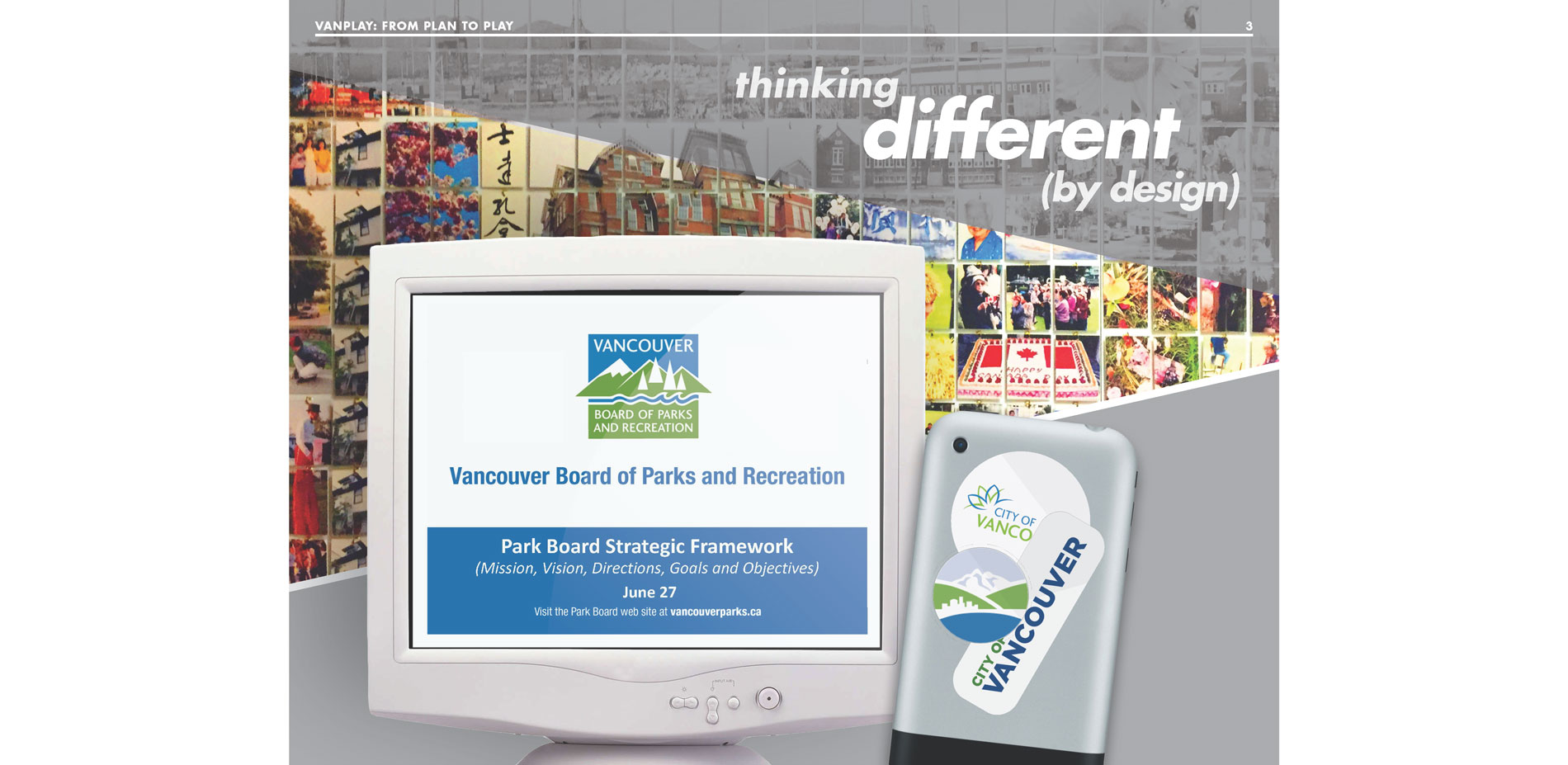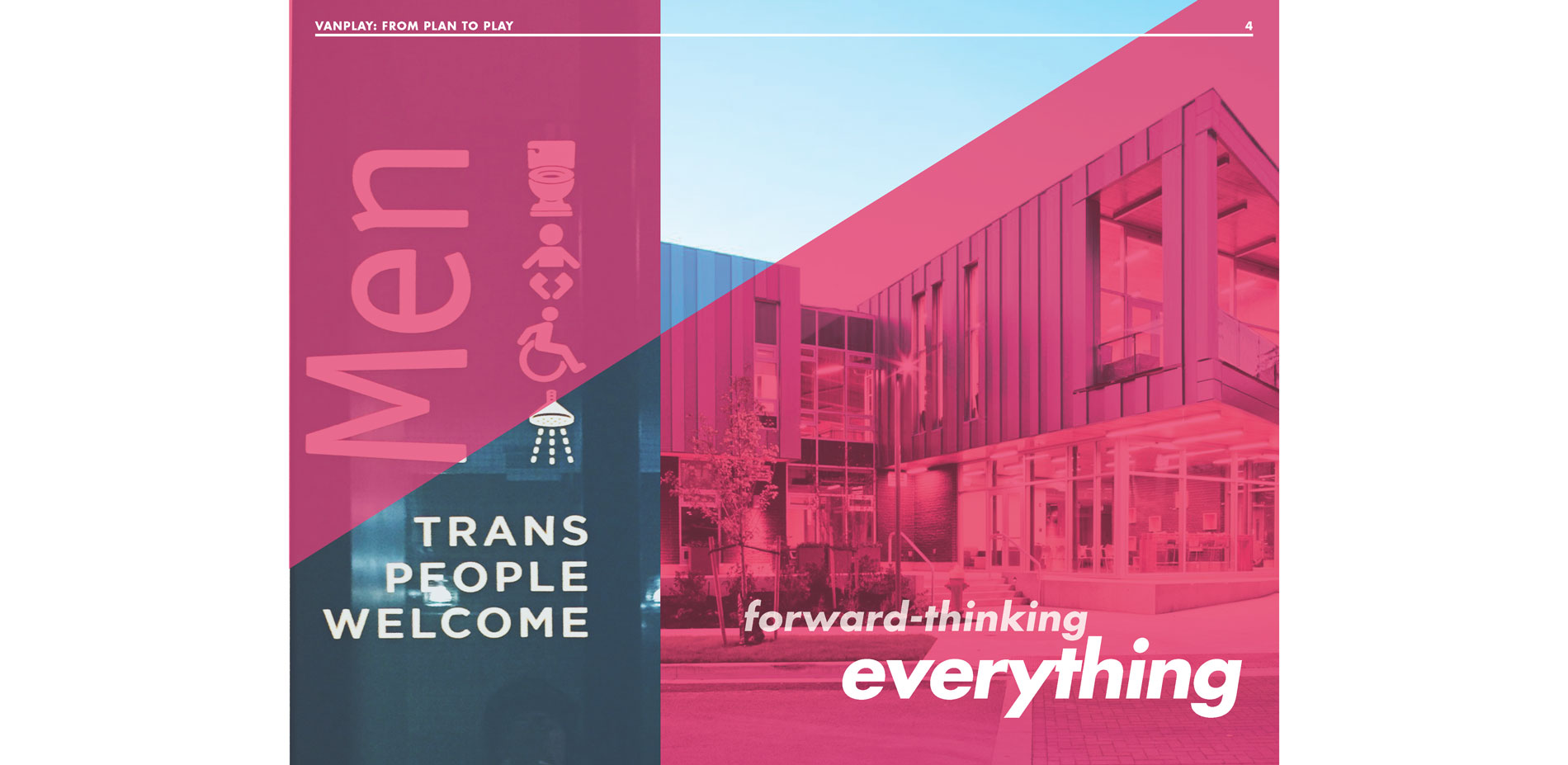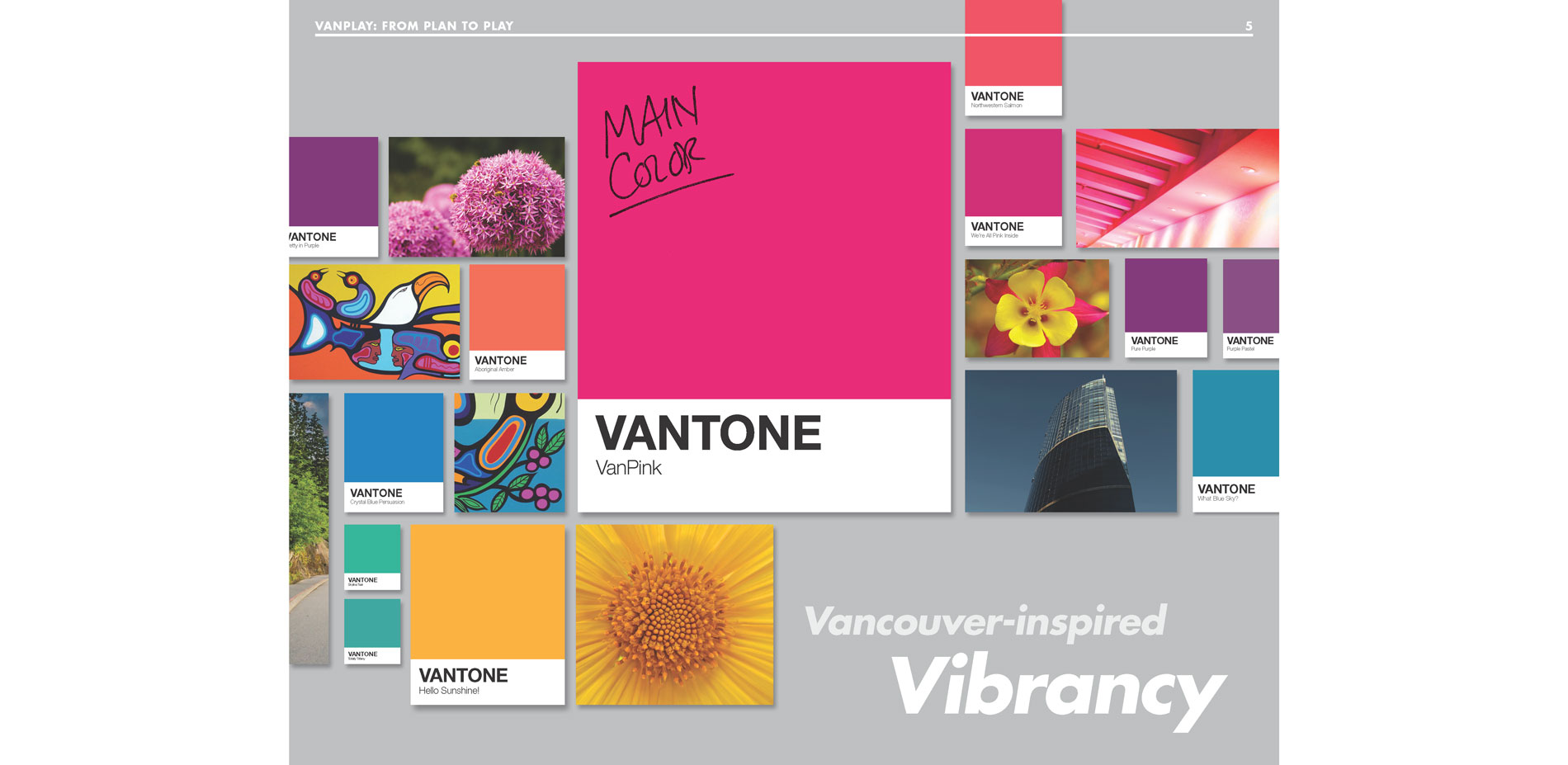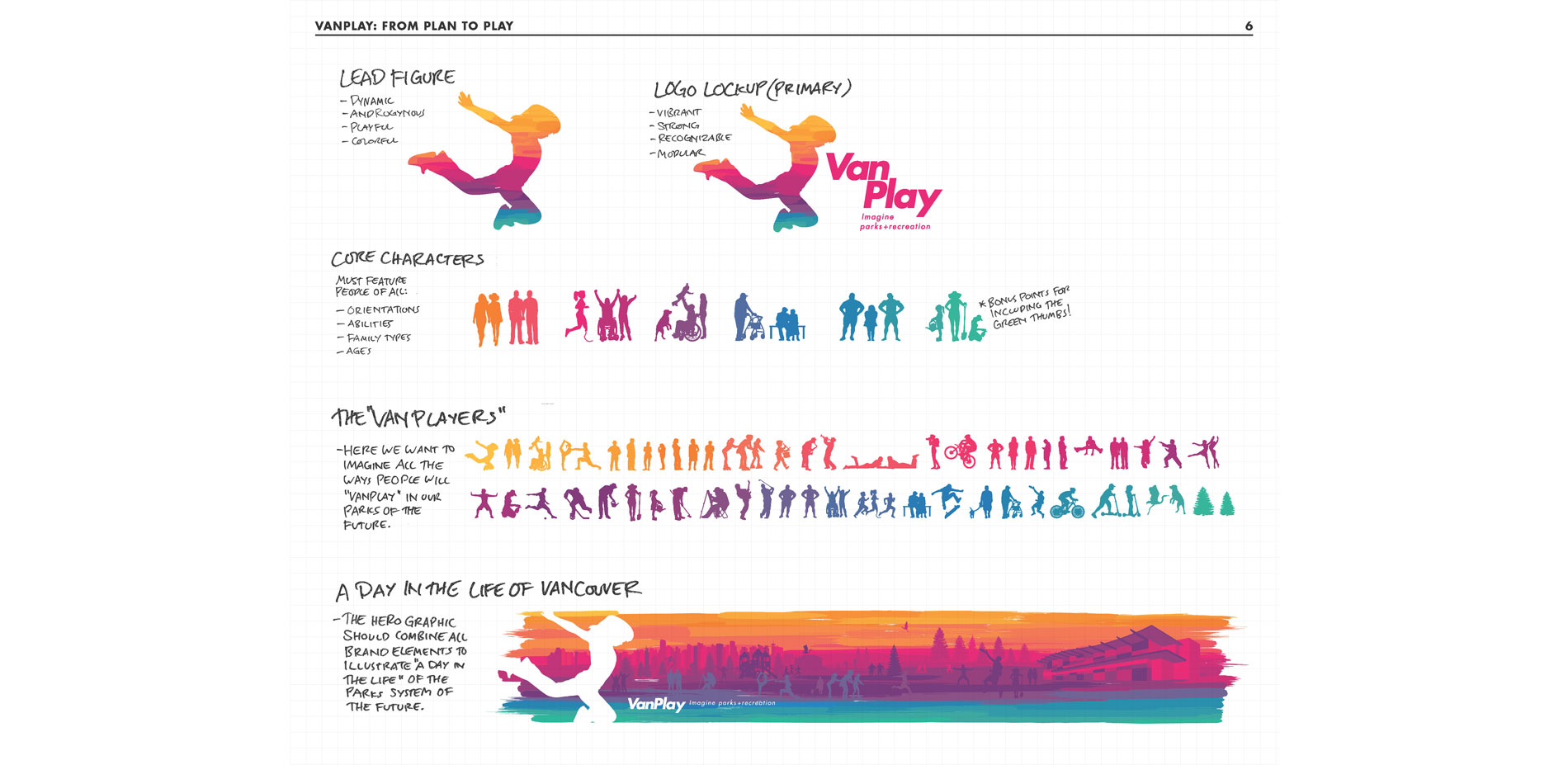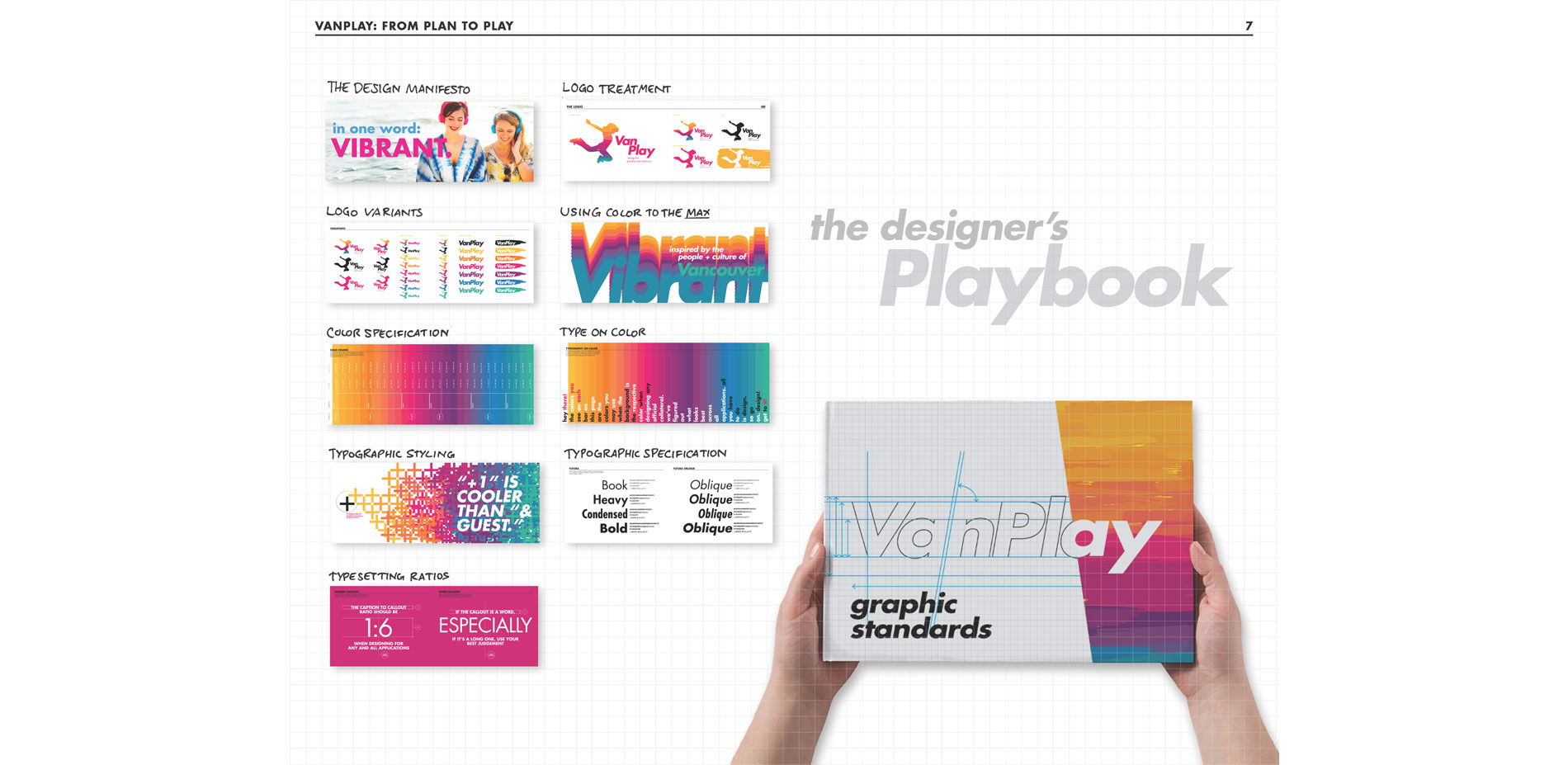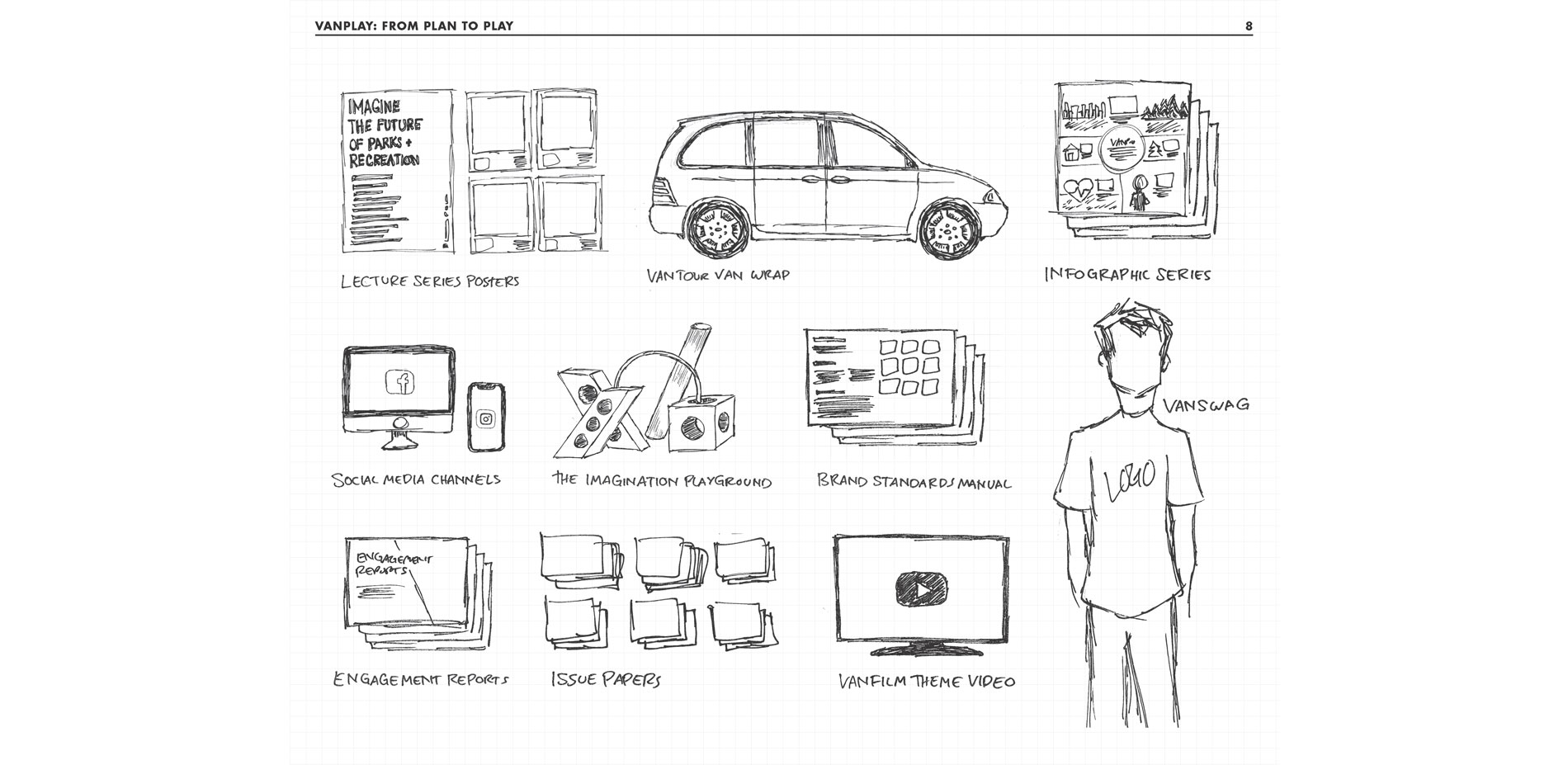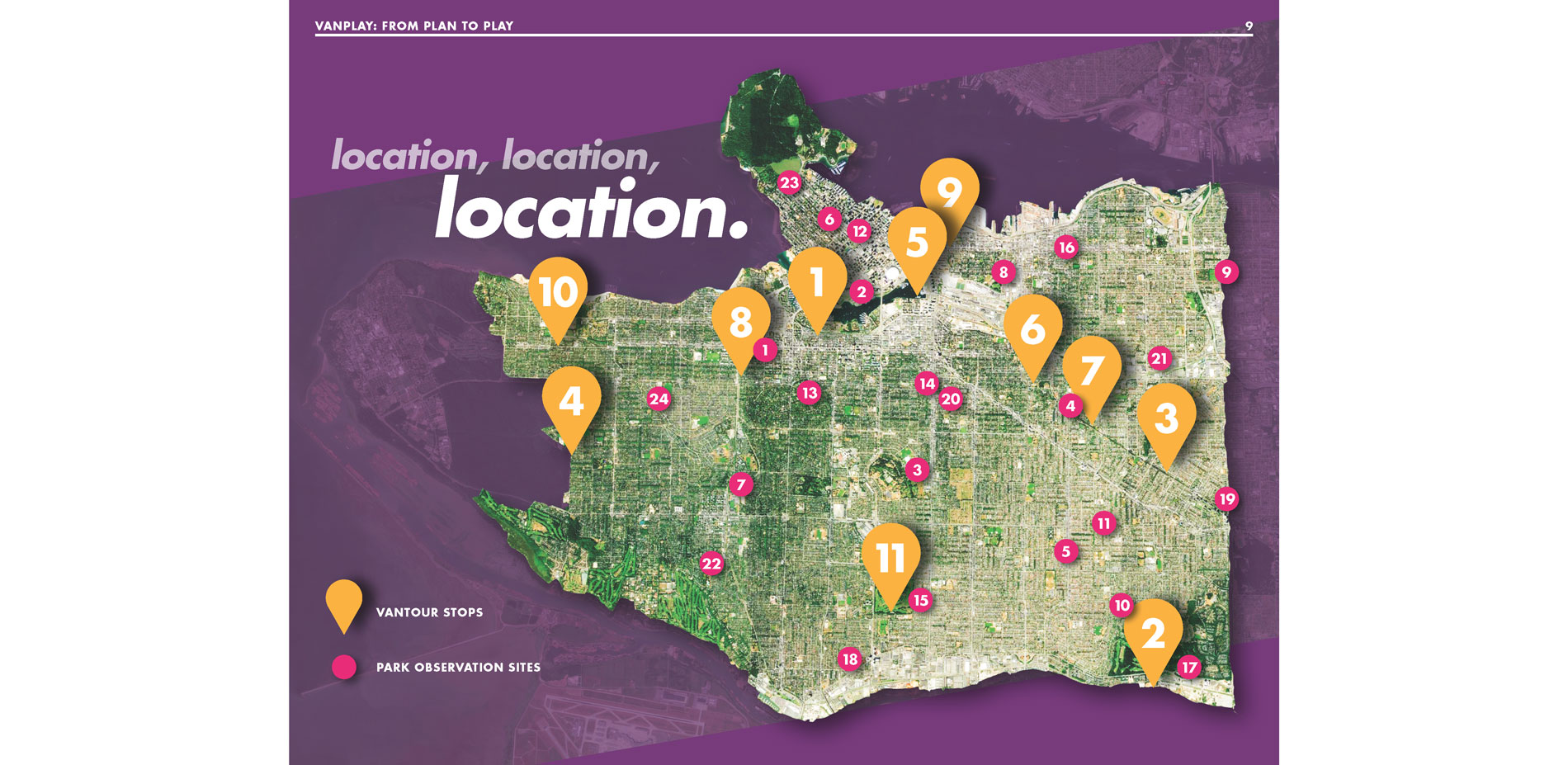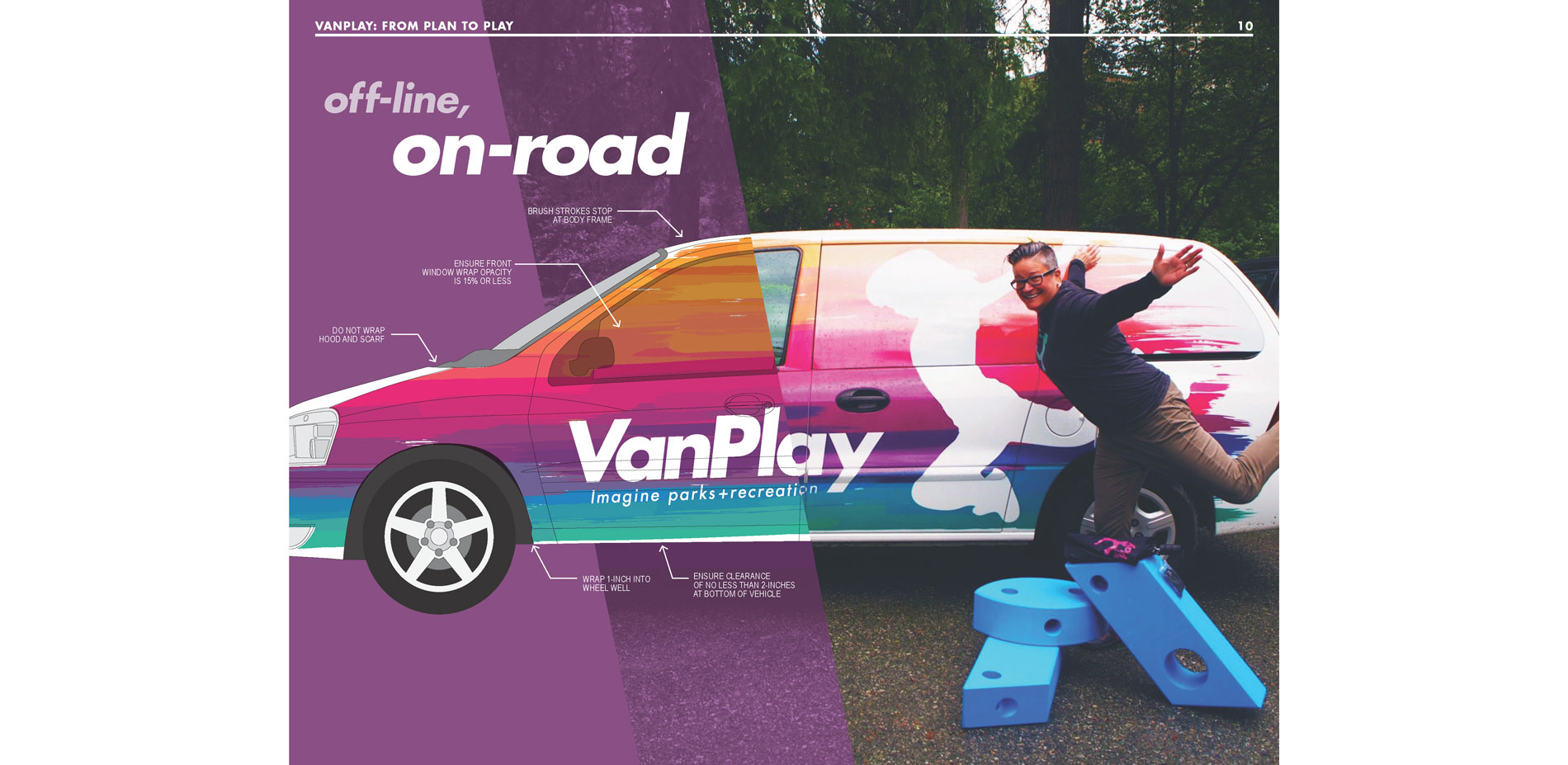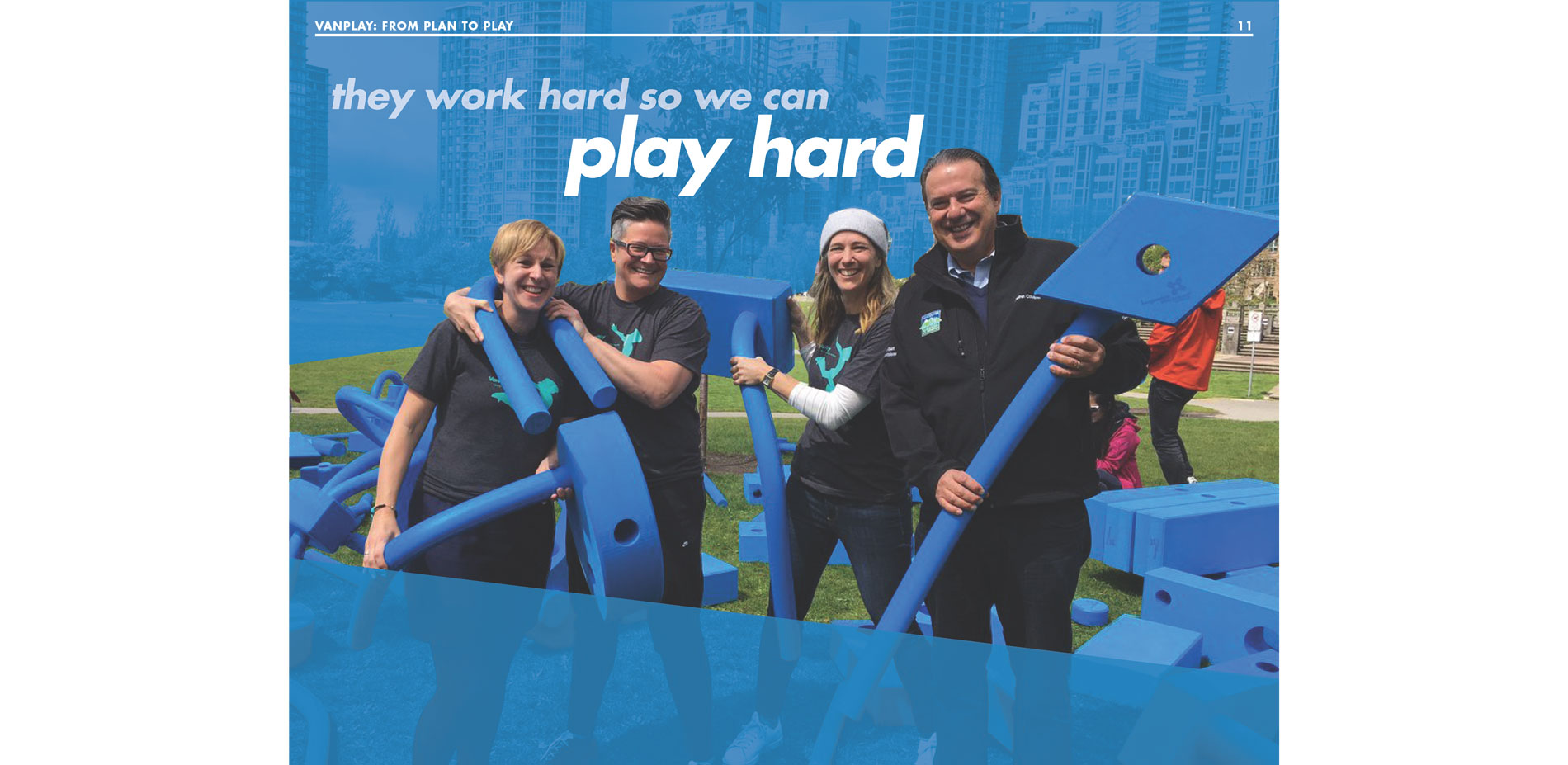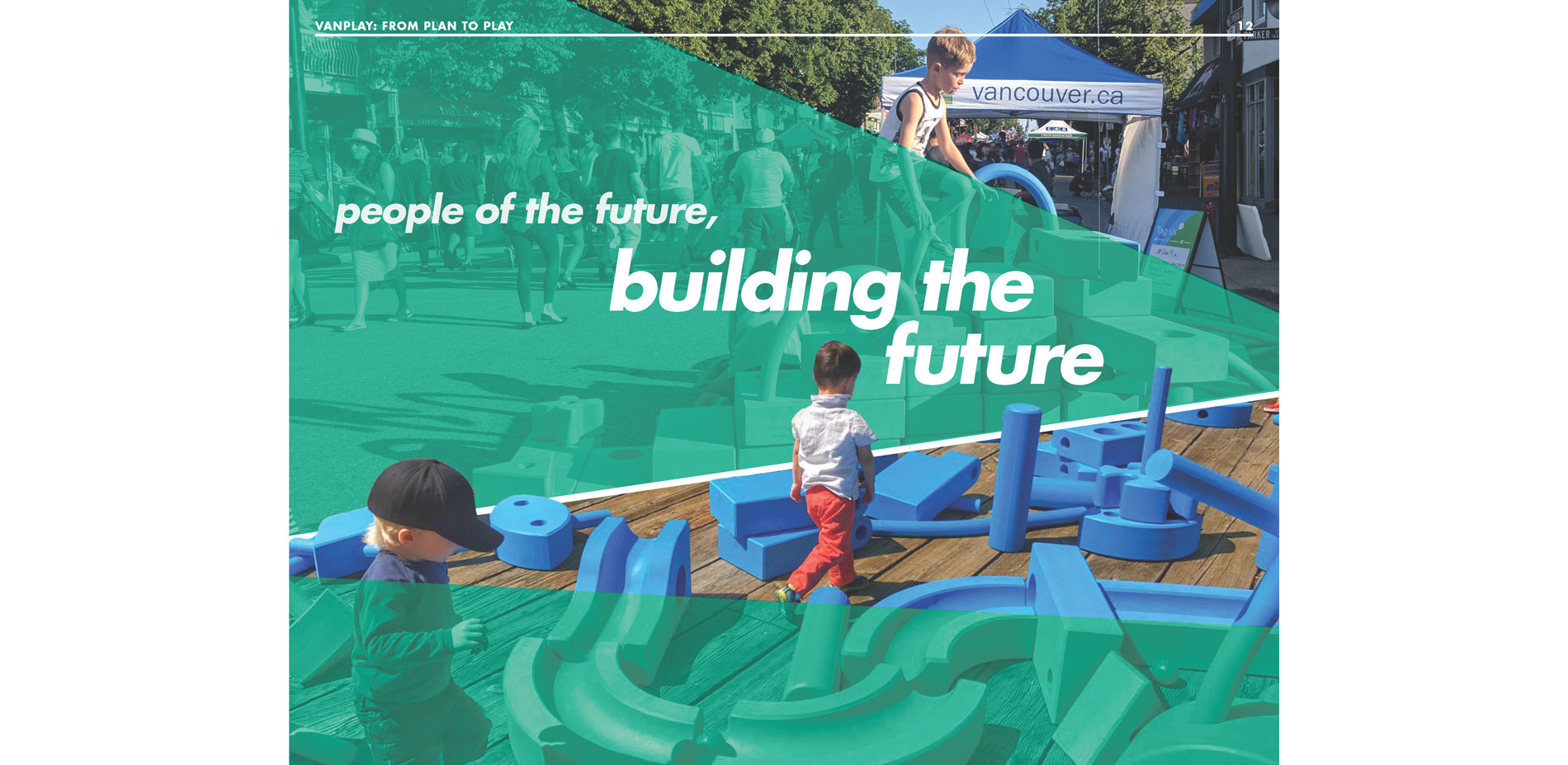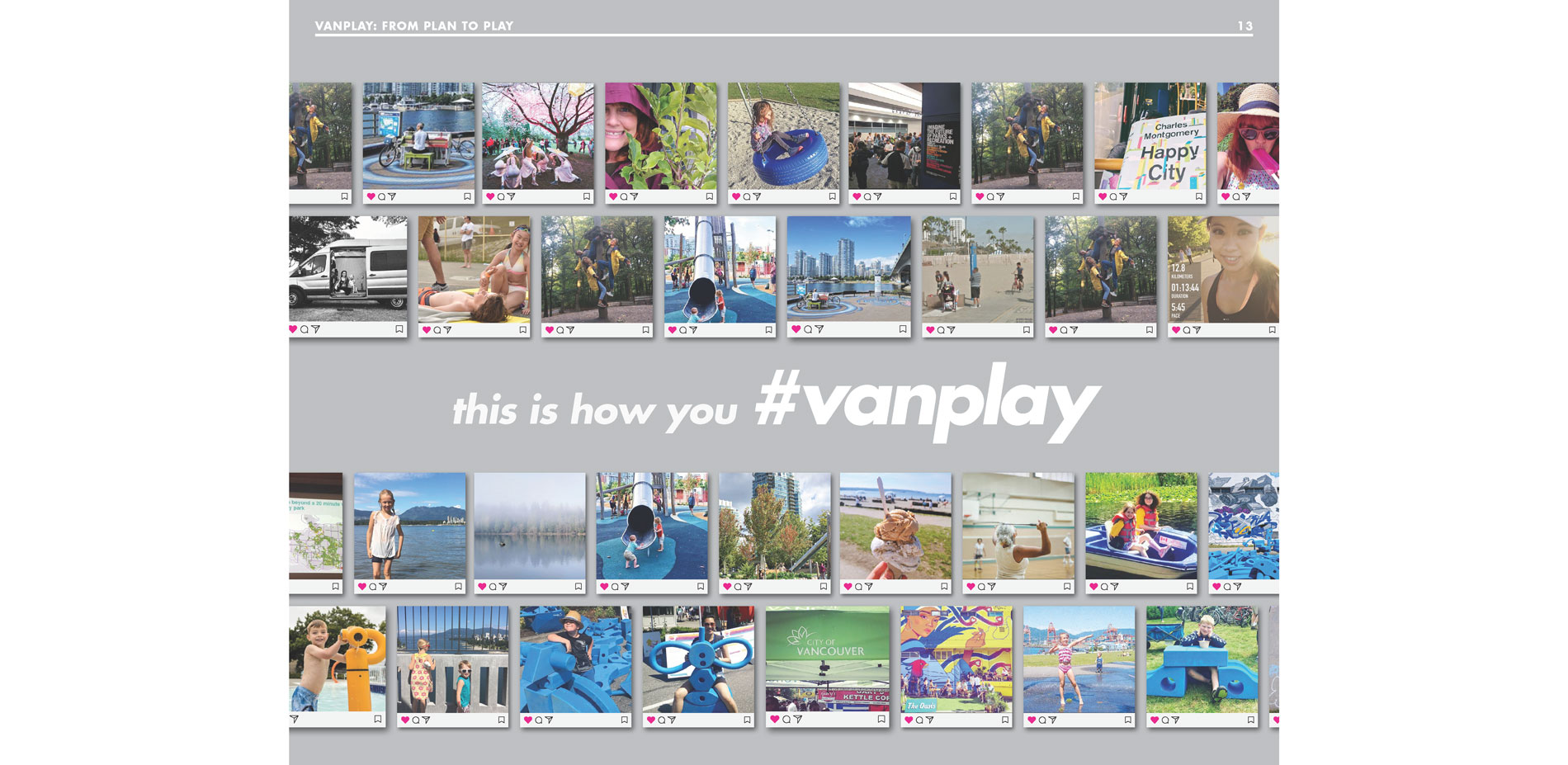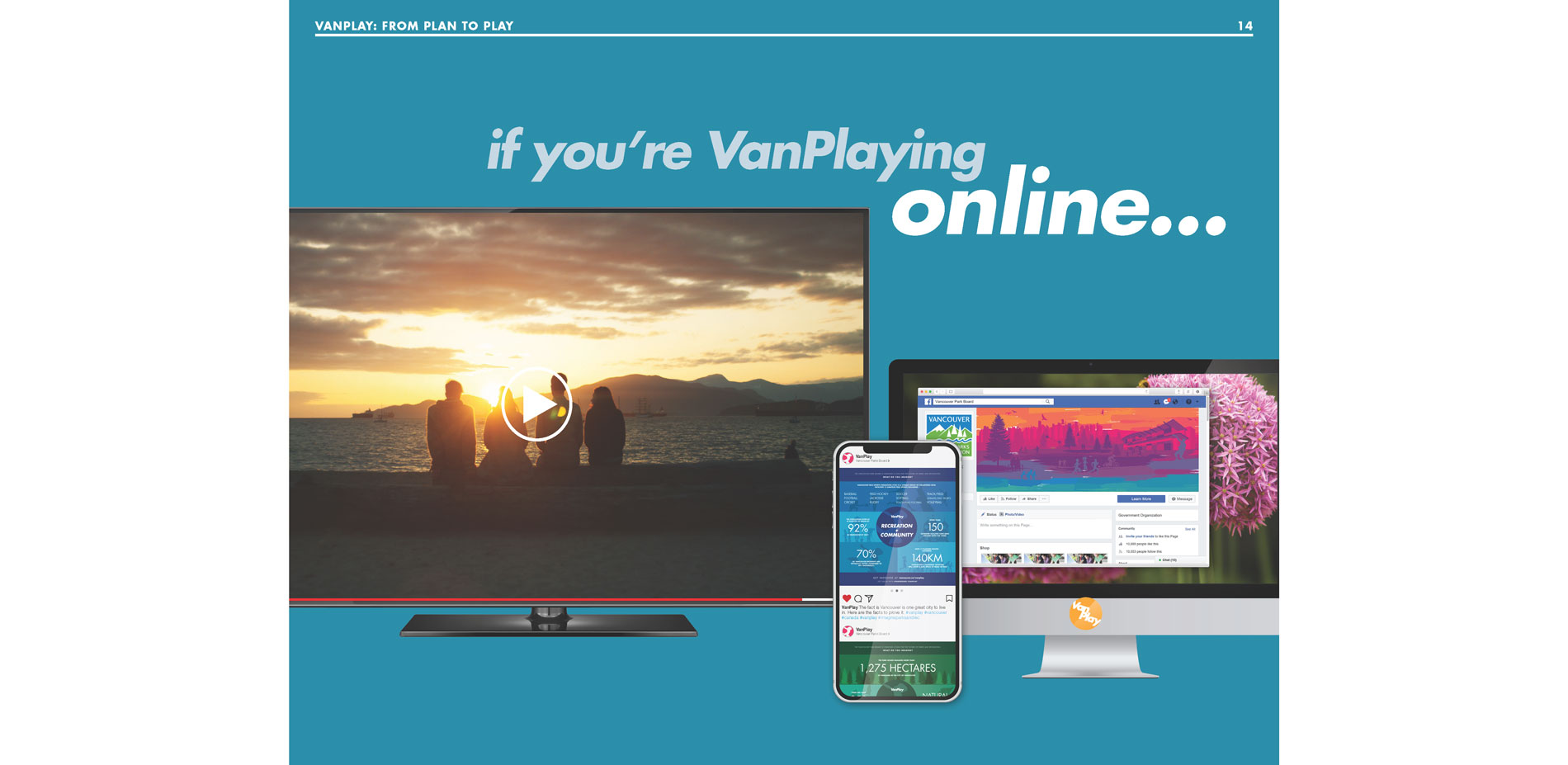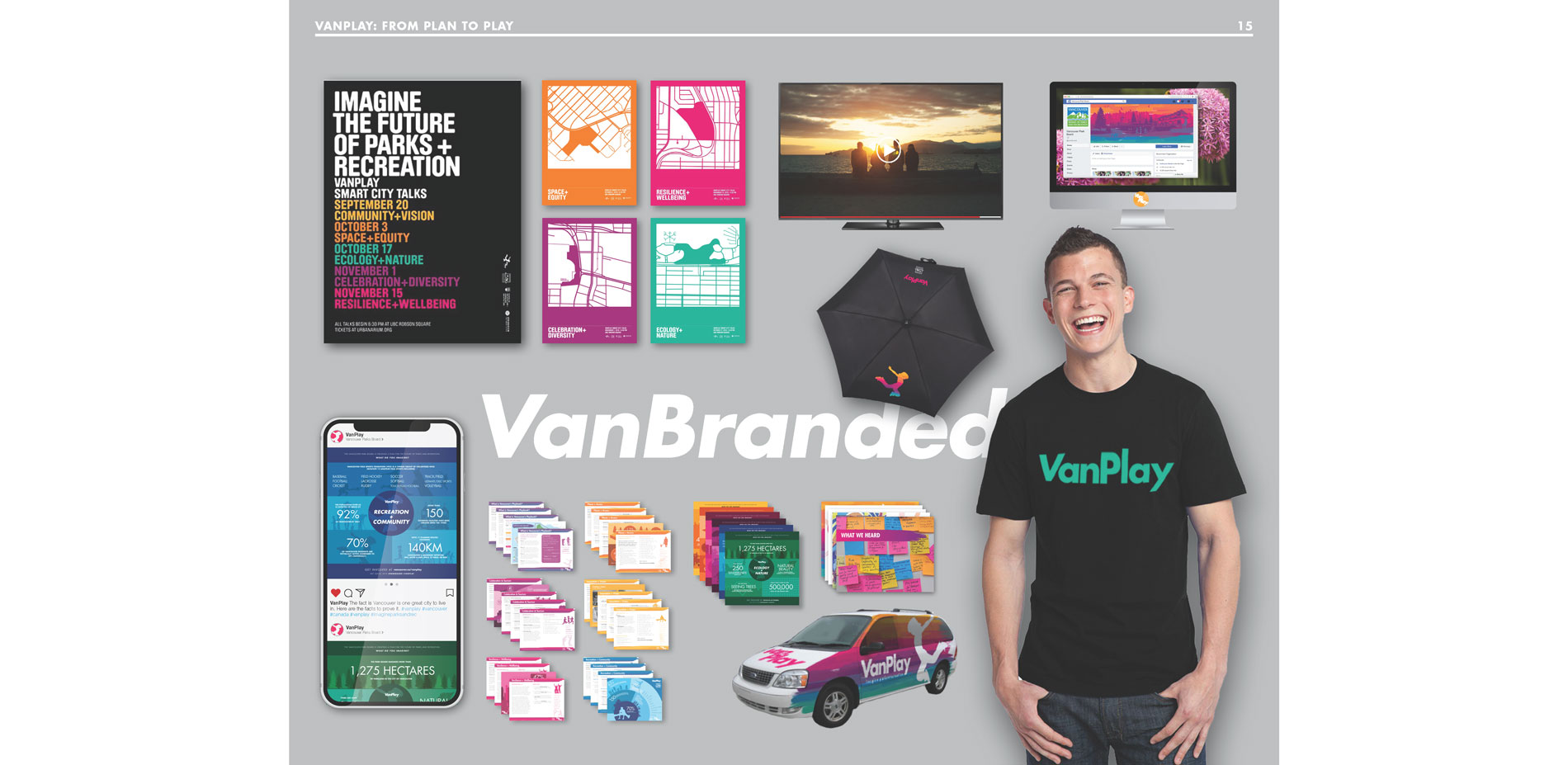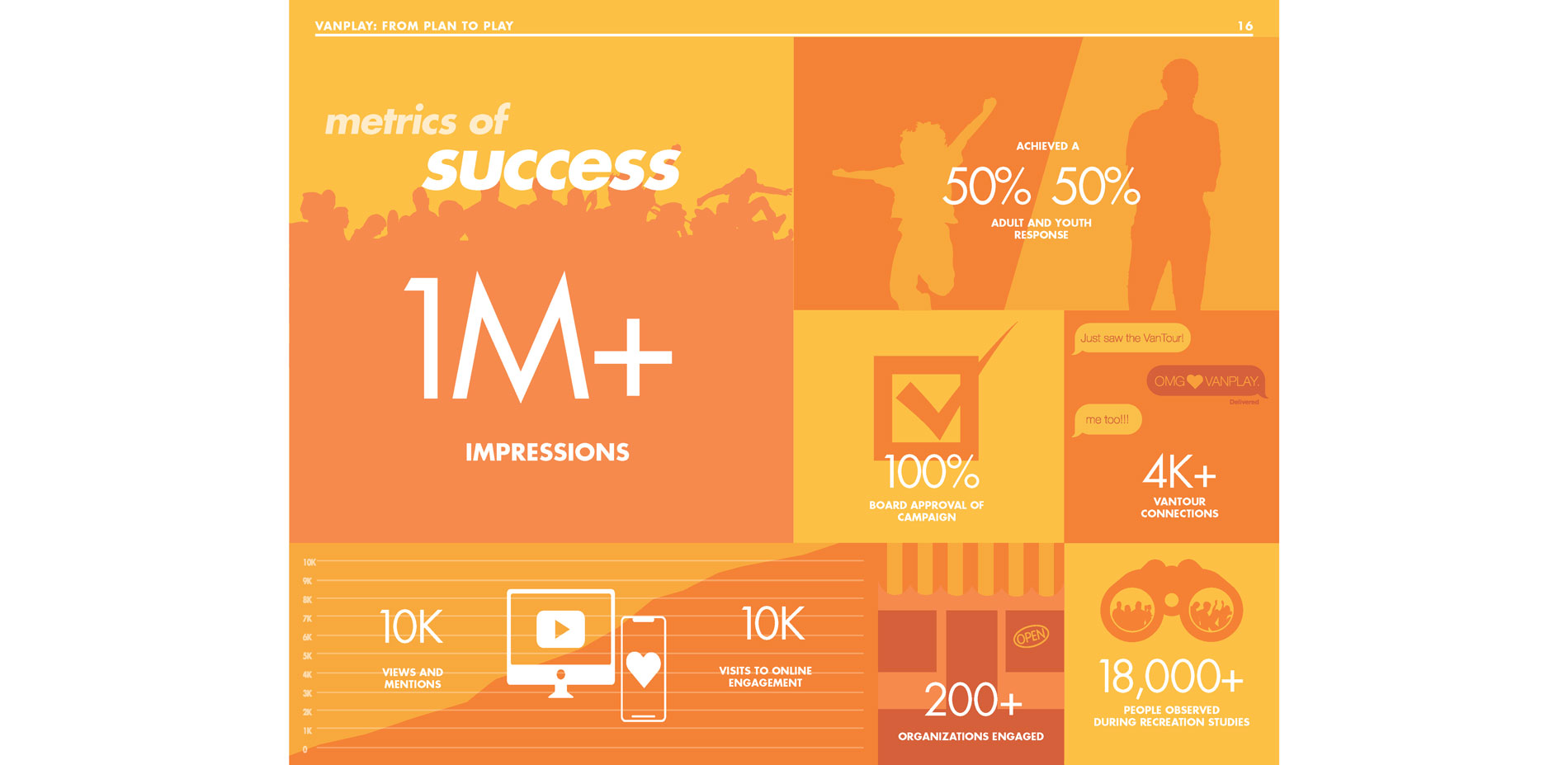VanPlay: Plan to Play
HONOR AWARD
Communications
Vancouver, BC, Canada | Design Workshop – Denver/Aspen | Client: Vancouver Board of Parks and Recreation
It shows a way for public agencies that have a certain identity to turn things around. It’s interesting to see a public agency take a fresh approach.
- 2018 Awards Jury
PROJECT CREDITS
Design Workshop Team Members:
- Principal: Kurt Culbertson, FASLA, FAICP
- Project Manager: Amanda Jeter, ASLA
- Project Landscape Architect: Cali Pfaff, ASLA
- Graphic Designer: Josh Lee
- Project Assistant: Bree Woolliscroft
Vancouver Board of Parks and Recreation Team Members:
- General Manager: Malcolm Bromley
- Director Park Planning & Development: Dave Hutch
- Senior Planner: Doug Shearer
- Project Manager: Katherine Howard
- Communications Coordinator: Godfrey Tait
- Engagement Coordinator: Michelle Larigakis
Additional Support:
- Anna Laybourn, AICP
- Carly Klein
- Sarah Horn
- Renee Martinez
- Allyson Mendenhall, ASLA
- Anna Cawrse, ASLA
- Josh Brooks, ASLA
Consultants:
- Modus Planning and Engagement
- Lees Landscape Architecture
- AES Urban Design 4 Health
- HCMA Architects
- Dr. Val Schaefer
- Janine De La Salle
- ETM Associates
Additional Vancouver Collaborators:
- Barbershop Films
- ReThink
- Urbanarium
- UBC School of Architecture and Landscape Architecture
PROJECT STATEMENT
How does a parks and recreation department recast itself as a relevant brand today that can successfully face the next century of change? Seeking a vision beyond the typical 'blue and green' parks motif, the Vancouver Board of Parks and Recreation challenged the design team to craft a brand to spark the public's curiosity in the first systemwide master plan in over 25 years.
Curlers to coyotes roam and recreate in Vancouver's network of 1,300 hectares of parkland, 28 kilometers of seawall and 175 neighborhood facilities. The resulting brand draws from this energy to forge a vibrant identity agile enough to represent the breadth of exceptional and progressive services offered—from mahjong to warming stations for the homeless.
VanPlay, the reenvisioned brand, garnered over 1 million digital impressions in its first six months and is helping the city create a framework for inclusivity and welcome in the face of challenges that range from sea level rise, aging infrastructure and rising social inequality.
PROJECT NARRATIVE
The Branding Dilemma
It has been over 25 years since the Vancouver Board of Parks and Recreation conducted a citywide master plan for parks and recreation. Since that time, the population has grown by 160,000 people to over 630,000 residents. Looking 25 years into the future, the city is expected to grow by 12 percent and with this growth, the parks system faces changing demands including an aging population, diversification of cultures, and increased social isolation reported by residents. Igniting this growth, real-estate development has erected towers of steel and glass, densifying neighborhoods and increasing the use of the city's 230 parks and 24 community centres.
Given the challenge of increased use and changing customer needs, the Park Board embarked on a parks and recreation master plan and with it, the task of generating a compelling brand for the project to connect the process to the community on a visceral level. The communication had to adequately address both the master plan and inform the process of making it. The brand shaped the documentation of the plan as well as an 18-month process that captured the attention of staff, stakeholders and members of the public who are involved in over a dozen other city planning initiatives.
Thinking Different (By Design)
As an origin point for the project, the client team challenged the designers to think beyond the traditional motifs we associate with parks and recreation. They expressed a strong desire for the brand to not only encapsulate the great diversity of Vancouverites but also the vast array of services that the Park Board provides, stretching the bounds of conventional parks and recreation.
Initial branding and identity exploration work took place in two workshops. The first used focus questions such as "what do we want the audience to THINK and FEEL about the master plan process" to generate a set of possible "thematic clusters" for branding:
- Important/meaningful project and process
- Don't miss out, exciting and fun
- An innovative plan
- A road map to the future
- Citizen driven plan and process
- Inclusive, providing access for all
- Rational, data and fact-based
- Healthy / active people and places
- My neighborhood, my parks (what's in it for me)
In the second, the group agreed on two key takeaways: first that the brand needed to emotionally connect with people in a way that data and facts would not. The group then focused its discussion on the unique and varied functions of Vancouver's parks and recreational facilities, programs and services. The conversation explored the myriad benefits offered to the city, to neighbourhoods, and to individuals. The closing round of discussion focused on words and phrases that would help develop an approach around purpose and connection. The following list was generated:
- What makes you move? What moves you?
- Why do they care (what moves you emotionally?)
- Shared purpose; Connection
- Rough; incompleteness; informal; wild
- Average people; approachable; not corporate; accessible
- Dynamic, vibrant
VanPlay and the Playbook
From the design brief meetings, the team executed a series of branding exercises to develop a name for the master plan process (VanPlay) and resulting master plan (the Playbook) that connoted movement, vitality and health. The colors of the communication materials moved away from traditional parks and recreation greens to reflect the vibrant colors and dimensions of the landscapes of Vancouver. Silhouettes used in graphic communication pulled from the gardens, beaches, parks and recreation activities of the city and its residents.
The design team analyzed social media and in situ observation to develop a representative community to use throughout the identity. The final piece of the identity was the VanScene, a modular hero scene of silhouettes and background used across all platforms. It imagined the life of the VanPlay community against the city skyline and a community centre in a background.
The brand book ensures that the VanPlay identity is usable by anyone and everyone involved in the planning process so that they can design assets that are immediately identifiable as being "of VanPlay" regardless of designer, firm or city department involved. Over the past year, over 1,000 individual pieces of content have been designed and created for the VanPlay project, all of which are undeniably "of VanPlay" and recognizable to shareholders and the public.
From Identity to Engagement
The next phase of the VanPlay process involved taking these ideas out into world for Vancouverites to read, view, discuss and play. The team created a suite of engagement activities inspired by the identity ideas of playfulness, inclusivity and movement. The activities aligned with the International Association of for Public Participation (IAP2) spectrum of community engagement (Inform, Consult, Involve, Collaborate, Empower). Early engagement activities included:
- The design team designed and launched infographics and background papers across social media platforms to highlight and share the key facts and figures of VanPlay (IAP2 Spectrum: Inform). An open network of sharing is a key trait of the VanPlay process.
- The greater VanPlay campaign incorporated a highly-produced video of vignettes showcasing life in Vancouver, bringing our "day in the life" VanScene to life. This video also reinforced the breadth of the Park Boards' influence in Vancouver, promoted the online survey and VanPlay tour events (IAP2 Spectrum: Inform).
- Offline awareness is often overlooked and underused in planning. The client and design team wanted as much top-of-mind attention on the plan as possible, so they wrapped a city vehicle as a moving billboard advertising the plan. The engagement events on the VanTour were strategically scheduled for locations that allowed the team to reach the most diverse audience possible in various income areas (IAP2 Spectrum: Inform & Involve).
- The tour van included a blue "imagination playground" set to catch people's attention and encourage family participation in the engagement activities (IAP2 Spectrum: Inform & Consult).
- A systemwide observation study took place over six weeks in the summer and documented how over 18,000 people used parks and recreation in neighborhoods of varying income and diversity. Results informed the current state engagement (IAP2 Spectrum: Inform).
- A citywide online survey was deployed to capture big ideas and parks and recreation needs from the community (IAP2 Spectrum: Inform & Consult).
- SmartCity Lectures around key topics identified through the survey (including park equity) were hosted by various North American expertswith community question-and-answer sessions and work sheet captures (IAP2 Spectrum: Inform & Involve).
Transformative Results
The VanPlay brand infused community engagement activities as well as high-level presentations to city officials and staff. Anecdotally, the client's corporate communication head lauded the project materials for their vibrancy and appeal. The campaign has created a space for the client and community to acknowledge current and future challenges and collectively imagine a brighter future for parks and recreation.
The metrics of success and uptake of the VanPlay brand and message include:
- Over 1 million digital impressions to the campaign;
- 4,000 connections through the VanTour and imagination playground;
- Over 200 organizations engaged;
- 10,000 video views and mentions;
- 10,000 visits to online engagement tools;
- 100 percent Park Board approval of graphic identity;
- VanPlay achieved an ideal 50 percent split between adult and child respondents to date.
This project ultimately marks a paradigm shift in how parks and recreation departments brand and identify themselves. By creating a versatile and useable identity, this project shows that custom brands can both embody the client's values and goals and empower the community to share their own dreams for the future. By staging engagement activities that built momentum with user-friendly tools—from hashtags to design standards—the brand took on its own vitality, catalyzing connection and excitement that would not have been possible without it.
PRODUCTS
Imagination Playground
